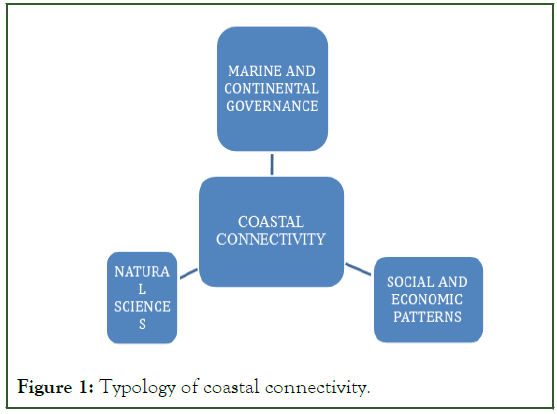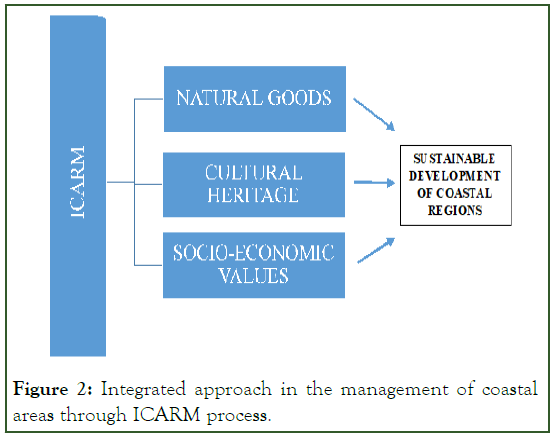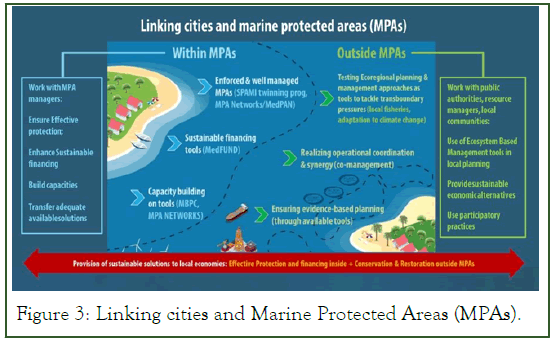Indexed In
- SafetyLit
- RefSeek
- Hamdard University
- EBSCO A-Z
- OCLC- WorldCat
- Publons
Useful Links
Share This Page
Journal Flyer

Open Access Journals
- Agri and Aquaculture
- Biochemistry
- Bioinformatics & Systems Biology
- Business & Management
- Chemistry
- Clinical Sciences
- Engineering
- Food & Nutrition
- General Science
- Genetics & Molecular Biology
- Immunology & Microbiology
- Medical Sciences
- Neuroscience & Psychology
- Nursing & Health Care
- Pharmaceutical Sciences
Case Report - (2023) Volume 26, Issue 6
The Lacking Connectivity between Land and Sea in the Coastal Management of Italian Seaboard
Nicola Cantasano1* and Federico Boccalaro22Associazione Italiana Per l’Ingegneria Naturalistica (A.I.P.I.N), Rome, Italy
Received: 01-Nov-2023, Manuscript No. JCZM-23-23924; Editor assigned: 03-Nov-2023, Pre QC No. JCZM-23-23924 (PQ); Reviewed: 24-Nov-2023, QC No. JCZM-23-23924; Revised: 01-Dec-2023, Manuscript No. JCZM-23-23924 (R); Published: 08-Dec-2023, DOI: 10.35248/2473-3350.23.26.590
Abstract
Seaboard areas are transitional zones between the landward and seaward sides of coastal regions, actually affected by a lot of human activities and by an increasing demographic pressure. In this critical context, it is necessary an integrated approach to coastal management requiring a close and tight relationship on both sides of coastal boundary. In Italy, there is not, until now, a global marine policy able to realize national and/or regional programs for the sustainable development of coastal regions. In particular, at the borders of Italian coastline, there is no connectivity between land and sea in coastal management. To overcome this issue, scientific advisors, administrative roles and policy makers must be involved in effective efforts to realize a transboundary coastal legacy at both sides of Italian coastline. This kind of connectivity must be realized and carried out in natural science, in social and economic constraints and in a sound marine/continental governance, strictly connected in the same landscape unit. To highlight this comprehensive approach it is reported a typical case study in the island of Sardinia, so to summarize different kind of connectivity in a coastal region. In conclusion, it is advisable a global approach to transboundary coastal areas merging all the biological, ecological, social and economic features for the economic growth of local people and, more generally, for human wellbeing.
Keywords
Italian seaboard; Coastal connectivity; Natural science; Socio-economic patterns; Marine governance
Introduction
Coastal regions are trans boundary areas where land and sea interact in a complex and dynamic balance in which a lot of human activities, from fisheries, maritime transport and port facilities to oil and gas exploitation, can affect the sustainable management of marine resources [1,2]. These anthropic pressures and their effects on natural ecosystems require a careful management and timely responses that would be realized not only in a vertical mode from local to global assessments, but also horizontally across all the productive and economic activities, such as fishery, agriculture industry, tourism and leisure, all involved for a sustainable management of marine and continental resources [3]. In this way, any seaboard area could become an “open system” for an effective and steady exchange of materials and energy between land and sea [4]. However, littoral zones are, actually, affected by a growing demographic pressure for the presence of about 600 million people living in seaboard areas of whom 360 ones are concentrated in urbanized conglomerations [5]. Indeed, most of human settlements are exposed to many anthropic and natural risks affecting, on the seaward side, some sensitive marine ecosystems and, on the landward hand, human infrastructures. By this way, coastal regions are becoming, nowadays, one of the most transformed areas of the Earth [6,7]. As regard Italian coastline, extended for about 8.300 km, there is no connectivity, between land and sea, in coastal management. These conditions are caused not only for the total fragmentation between local, regional and national levels but also for the gap, still existing, between science and policy in the governance of Italian seaboard [8]. In this shadow area, the main challenge for a sound coastal management is to ensure that the structure and the functioning of coastal ecosystems could be valued within a social system where ecosystem services could deliver goods and benefits for mankind [9,10]. This paper analyzes different types of coastal connectivity related to contiguous features not only in some ecosystem components and within a new kind of coastal governance but also in socio-economic impacts (Figure 1).

Figure 1: Typology of coastal connectivity.
Connectivity in natural sciences
An integrated approach to coastal management requires to consider physical, chemical and biological sciences as a whole. In this way, an effective abiotic connectivity could be realized if water and hydrographic patterns keep linked on both side of the boundary between land and sea. This legacy could be achieved whereas water characteristics such as temperature, salinity and nutrients are strictly bound in the same landscape unit without any human infrastructures hindering water motion. Moreover, it is necessary to ensure an ecological connectivity within a transboundary context where organisms, species and populations could be connected by their life cycles, migration patterns and/or by larval transport within a process of coastal connectivity. This objective, especially important for mobile species, could be realized through a net of ecological corridors close to coastal regions which are represented by fluvial basins. So, it is suggested to apply in any coastal regions the main principle of “water continuum”, where coasts and fluvial catchments are regarded as whole system [11-14]. According to this fundamental, the United Nations Centre for Human Settlements suggested a new kind of Integrated Coastal Area and River Basin Management (ICARM) [15]. In this direction, some researchers highlighted the connections between coastal and continental zones connected by catchment areas [16-19]. In Italian seaboard ICARM process is totally neglected at national, regional and local levels while there are, really, a lot of coastal regions where littoral and continental areas are strictly connected by them ecological corridors of fluvial basins. So, it could be realized an “open system”, supported by ICARM process, able to integrate in the same landscape unit a whole of biological, cultural and social values for a sustainable development of Italian coastal regions (Figure 2).

Figure 2: Integrated approach in the management of coastal areas through ICARM process.
Socio-economic connectivity
The social and economic connectivity in coastal regions is made by three basic elements such as societal connectivity, cultural legacy and economic coherence.
The patterns of socio-economic connectivity in Italian coastal regions
• Social connectivity
• Cultural legacy
• Economic coherence
The first principle of this model is the societal connectivity regarding all the interactions between stakeholders involved at either sides of the border between land and sea [20]. This trans boundary approach could be realized if all stakeholders are directs towards the same outcomes [21,22]. As regards the second fundamental of this pattern, represented by the cultural legacy of the territory, it is necessary that local and indigenous people, living in a trans boundary landscape could share the accurate and customs in the use of coastal resources. Finally, the economic coherence of this model could be realized only if fishing, agricultural and industrial activities, occurring in a trans boundary context remain strictly connected and subjected to the same rules [23].
This kind of approach aims to realize the following goods:
• Achieve the global development of social and economic values for the welfare of coastal people.
• Protect and improve cultural heritage in seaboard areas.
• Limit natural and anthropic hazards affecting cultural goods and human infrastructures.
• Ensure a close partnership of all stakeholders engaged in coastal management.
• Promote the cooperation between policy makers, scientists and coastal managers at national, regional and local levels in ICARM process.
In conclusion, an effective transboundary connectivity in social and economic patterns needs that all the sectors, at each side of the boundary, share the same constraints and practices for a sound coastal management.
Connectivity in coastal governance
Coastal governance is the melting point between policies, administrations and legislative means all engaged in the management of seaboard areas [9,24]. The connectivity in the coastal government of Italian littoral regions is formed by three elements such as administrative coherence, legislative equivalence and the designation of Marine Protected Areas (hereafter, MPA).
The patterns of coastal governance connectivity in Italian coastal region
• Administrative equivalence
• Legislative equivalence
• Equivalence in marine protected areas
Firstly, the administrative equivalence requires a close cooperation between all the legislative bodies working altogether across coastal boundaries from higher national levels to lower and local ones [25,26]. Secondly, the legislative equivalence is carried out in the implementation of European marine legislation but this challenge is, sometimes, obstructed by national and regional rules [27]. So, this gap could be bridged only if Italian government agrees to implement the community directives in their national regulations. Thirdly, the equivalence in the appointment of MPA becomes necessary to support some of the most important European directives for the implementation of Natura 2000, sites aimed to protect at least 30% of marine areas until 2030 year [23]. Finally, it is necessary to realize an effective connectivity in all the elements of coastal governance, according to a transboundary marine management.
Case Presentation
ENSERES project (Enhancing Socio-Ecological Resilience in Mediterranean coastal regions), funded by European Union on 2021 year, and was launched by the island of Sardinia (Italy) to protect its coastal outline. So, the main fundamentals of this regional program could represent a typical case study able to summarize the different kind of connectivity analyzed in the present research. The regional planning aims to realize an integrated management in the Gulf of Oristano along the western coast of Sardinia, involving local governments, stakeholders, coastal people, fishermen, farmers and coastal managers, all engaged in the same purpose [28].
Results and Discussion
The project aims to analyze the global impacts in the exploitation of marine and freshwater resources, threatening biodiversity levels and ecosystem functioning. In this way, it is to protect priority habitats and at the same time, to improve local economy applying the principles of an Ecosystem Based Management (EBM ) approach able to realize an effective social and ecological resilience. Indeed, it is necessary to insert EBM tools in ICARM process so to preserve coastal, marine and freshwater ecosystems as sustainable livelihoods for local people. The main positive effects of the project, expected in the short and long run, include the following objectives [29].
• Improvement of biodiversity management and restoration;
• Reconciling the urban with natural surrounding areas;
• Reduction of pressures such as pollution, tourism and climate change;
• Recycling and reusing wastes;
• Building awareness and training stakeholders.
Furthermore, based on a multilevel cooperation, restoration approaches and natural resource management will be advanced, while collaboration amongst private and public will be improved, linking coastal towns and Marine Protected Areas (MPAs) in the same landscape unit [30] (Figure 3).

Figure 3: Linking cities and Marine Protected Areas (MPAs).
Conclusion
Coastal regions are connecting areas able to merge in the same landscape unit a lot of biological, ecological, social and economic features depending and interacting each other. Therefore, it is necessary a global approach to these sensitive and transboundary areas including their seaward and landward sides, extending an overall spatial planning from the land to the sea. Such a complex system requires a general vision of the main issues concerning coastal regions and a comprehensive analysis of the whole seaboard areas. Indeed, the dynamic natural and social environment, typical of littoral regions, highlight that any action affecting the seaward sides can influence the landward one and vice versa. So, it is necessary, for a sound coastal management, a vertical integration from local to national levels but also a horizontal approach between all the sectors governing both sides of this transitional area. In conclusion, it is an integrated and comprehensive approach to coastal management so to realize a comprehensive landscape planning in the seaward and landward sides of coastal regions.
References
- Boyes SJ, Elliott M, Thomson SM, Atkins S, Gilliland P. A proposed multiple-use zoning scheme for the Irish Sea: An interpretation of current legislation through the use of GIS-based zoning approaches and effectiveness for the protection of nature conservation interests. Mar Policy. 2007; 31(3): 287-298.
- Georgian S, Hameed S, Morgan L, Amon DJ, Rashid U, Johns SD, et al. Scientists' warning of an imperiled ocean. Bio Cons. 2022; 272: 109595.
- Hall M. Trends in ocean and coastal tourism: the end of the last frontier? Ocean Coast Manag. 2001; 44: 601-618.
- Reiners WA, Driese KL. The propagation of ecological influences through heterogeneous environmental space. Bio Sci. 2001; 51: 939-950.
- Warner K, Erhart C, de Sherbinin A, Adamo SB, Chain-Onn TC. In: Search of shelter. mapping the effects of climate change on human migration and displacement. CIESIN pub. 2009; 26.
- Cummins RA, Li L, Wooden M, Stokes MA. Demonstration of set-points for subjective wellbeing. J Happ Stud. 2014; 15: 183–206.
- Ietto F, Cantasano N, Pellicone G. A new coastal erosion risk assessment indicator: Application to the Calabria Tyrrhenian Littoral (Southern Italy). Environmental Processes. 2018; 5: 201-223.
- Cantasano N, Pellicone G, Ietto F. Integrated coastal zone management in Italy: Aa gap betweeen science and policy. J Coast Cons. 2017; 21: 317-325.
- Elliott M, Borja A, Cormier R. Managing marine resources sustainably: A proposed integrated systems analysis approach. Ocean Coast Manag. 2020; 197: 105315.
- Elliott M. Marine ecosystem services and integrated management: “There's a crack, a crack in everything, that's how the light gets in”! Mar Pollut Bull. 2023; 193: 115177.
[Crossref] [Google Scholar] [PubMed]
- Vannotte RL, Minshall GW, Cummings KW, Sedell JR, Cushing CE. The river continuum concept. Can J Fish Aquat. Sci. 1980; 37: 130-137.
[Crossref] [Google Scholar]
- Meybeck M. The IGP Water Group: a response to a growing global concern. IGBP, Stockholm. Glob Chang Newsl. 1998; 368: 8-12.
- Meybeck M. Global analysis of river systems: from earth system controls to anthropocene syndromes. Philos Trans R Soc Lond B Biol Sci. 2003; 21.
[Crossref] [Google Scholar] [PubMed]
- Seastedt TR, Bowman WD, Caine N, McKnight D, Townsend A, Williams MW. The landscape continuum: A model for high-elevation ecosystems. Bio sci. 2004; 54 (2): 111-121.
- U.N.C.H.S. (United Nations Centre for Human Settlements Habitat). Issues in the Integrated Planning and Management of River/Lake Basins and Coastal Areas. A Human Perspective. 1996; 1-57, 1996.
- Rasch PS, Ipsen N, Morgensen B. Linking integrated water resource management and integrated coastal zone management. Water Sci Technol. 2002; 51: 221-229.
[Crossref] [Google Scholar] [PubMed]
- Coccossis H. Integrated coastal management and river basin management. Water Air Soil Pollut Focus. 2004; 4: 411-419.
- Cantasano N, Pellicone G. Marine and river environments: A pattern of integrated Coastal Zone Management (ICZM) in Calabria (Southern Italy). Ocean Coast Manag. 2014; 89: 71-78.
- Santana SE, Barroso GF. Integrated ecosystem management of river basins and the coastal zone in Brazil. Water Res Manag. 2014; 28: 4927-4942.
- Newton A, Elliott M. A typology of stakeholders and guidelines for engagement in transdisciplinary, partecipatory processes. Frontiers Mar Sci. 2016; 3: 230.
- Ostrom E. A general framework for analyzing sustainability of socio-ecological patterns. Science. 2009; 325(5939): 419-422.
[Crossref] [Google Scholar] [PubMed]
- Jay S, Alves FL, O'Mahony C, Gomez M, Rooney A, Almodovar M, et al. Transboundary dimensions of marine spatial planning: Fostering inter-jurisdictional relations and governance. Mar Policy. 2016; 65: 85-96.
- Addamo A, Santos CA, Guillen J, Neehus S, Baptista PA, Quatrini Sm, et al. Directorate general for maritime affairs & fisheries. Pub Europ Union. 2022. 245: 106875.
- Fritz JS. Towards a “new form of governance” in science-policy relations in the European Maritime Policy. Mar Policy. 2010; 34(1): 1-6.
- Cormier R, Elliott M, Borja A. Managing marine resources sustainability-the “management reponse-footprint pyramid” covering policy, plans and technical measures. Frontiers Mar Sci. 2022; 9: 869992.
- Cavallo M, Elliott M, Touza J, Quintino V. Benefits and impediments for the integrated and coordinated management of European seas. Mar Policy. 2017; 86: 206-213.
- Boyes SJ, Elliott M, Murillas-Maza A, Papadopoulou N, Uyarra MC. Is existing legislation fit-for-purpose to achieve good environmental status in European seas? Mar Pollut Bull. 2016; 111, 1–2: 18-32.
- Boccalaro F. In: Coastal Defence and Soil Bioengineering. Palermo, 2012; 191-202.
- ENSERES ENhancing Socio-Ecological RESilience in Mediterranean coastal areas-European Union. 2021.
- Papageorgiou M, Kyvelou S. Aspects of marine spatial planning and governance: adapting to the transboundary nature and the special conditions of the sea. Europ J Environ Sci. 2019; 8(1): 31-37.
Citation: Cantasano N, Boccalaro F (2023) The Lacking Connectivity between Land and Sea in the Coastal Management of Italian Seaboard. J Coast Zone Manag. 26.590.
Copyright: © 2023 Cantasano N, et al. This is an open-access article distributed under the terms of the Creative Commons Attribution License, which permits unrestricted use, distribution, and reproduction in any medium, provided the original author and source are credited.
